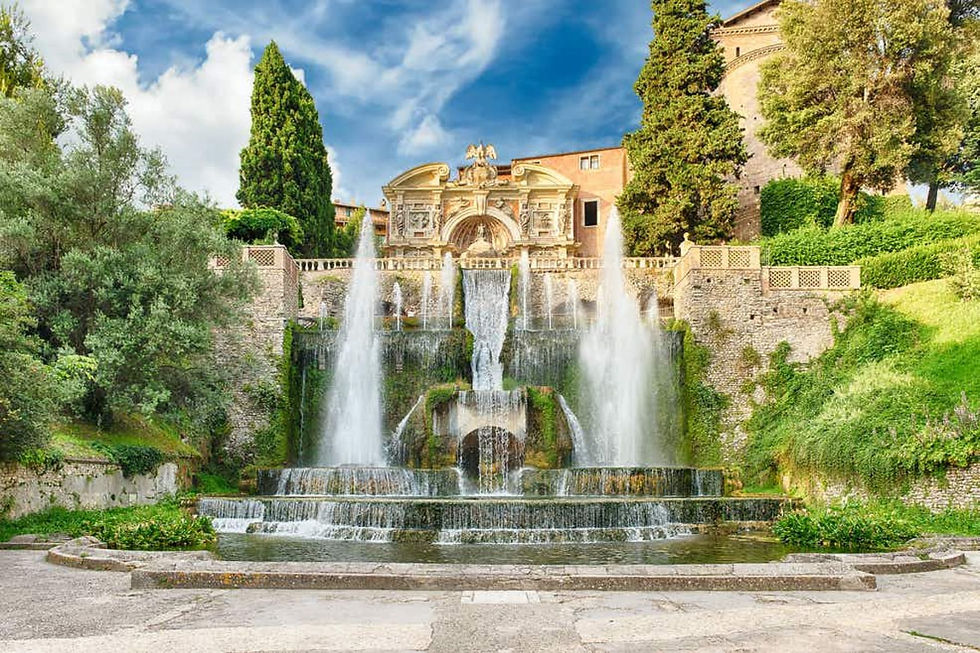Tivoli - Villa d'Este
Villa d'Este is a masterpiece of Italian garden and park design and a UNESCO World Heritage site, renowned for its stunning ensemble of fountains, nymphaea, grottos, hydraulic devices, and musical features, which served as a model for many European gardens and parks of the Mannerist and Baroque periods.
The garden of Villa d'Este is primarily a part of the magnificent landscape, artistic, and historical context of Tivoli. It is situated on land rich in ravines, caves, and waterfalls, where for thousands of years there has been a struggle between stone and water. The powerful structures and terraced layers are reminiscent of the Hanging Gardens of Babylon—one of the Seven Wonders of the Ancient World. The waterworks, which include an underground tunnel, testify to the engineering knowledge of the ancient Romans.
Cardinal Ippolito I d'Este, disappointed at not being elected pope, decided to create a villa of grandeur worthy of the courts of Ferrara, Rome, and Fontainebleau, reviving the splendour of the nearby Villa Adriana. In 1550, he became the ruler of Tivoli, and in the same year, he conceived the idea of creating a garden on the steep slope of the local valley. However, the full architectural design of the villa did not appear until 1560. The project was developed by the artist, archaeologist, and architect Pirro Ligorio, and its realisation was entrusted to the court architect Alberto Galvani.
